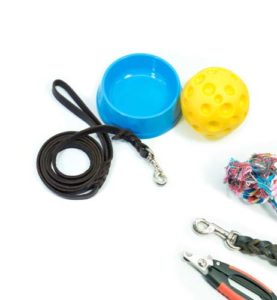Finding a good apartment or house as a pet owner can be difficult since a landlord is likely to prefer a tenant without pets. Depending on the state, landlords also have a legal right to refuse to rent to people with pets, with a few exceptions that fall under the Fair Housing Act which prevents discrimination against tenants. In this particular case, the law allows people with disabilities to have an emotional support animal (ESA) or a service animal even if the landlord has a “no pets” policy.
Even though 72% of renters in the U.S. have pets and 45% of renters say that allowing pets is the most important feature they care for when they look for a place to rent or even buying a house, according to a survey by Rent.com, landlords are still hesitant to accept pets. Here are 8 tips to help you find a nice place to rent if you are a pet owner and wish to avoid trouble.
ALSO READ: Pets vs Landlords – How to Adopt a Dog If You’re Renting
1. Look for Pet-Friendly Places First
 The most obvious start in your home search is to first look for pet-friendly apartments or houses in the area. It is the best option that will allow you to move in with your pet without having to plead with the landlord. Not all websites allow for this feature, but some like Tripping.com do allow to search for pet-friendly-only rentals.
The most obvious start in your home search is to first look for pet-friendly apartments or houses in the area. It is the best option that will allow you to move in with your pet without having to plead with the landlord. Not all websites allow for this feature, but some like Tripping.com do allow to search for pet-friendly-only rentals.
Alternatively, get in touch with local humane society or animal care and control agency. They can help you find apartment communities that allow pets or point in the right direction. Finally, whether renting or buying, it's usually the easiest to hire a real estate agent to help you with your search. In some cities and states (Austin, for example), these locators will not charge you anything; their commission comes out of the landlord's pocket.
2. Avoid Big Rental Communities
The more people in the area, the higher the chance dogs will not be accepted. Focus on individual home and condominium owners because it will be easier to persuade them than a large corporate community. There are also places that allow certain pets, like cats or small dogs. Look for places with pet-keeping guidelines with clearly specified resident obligations.
3. Show Responsibility
 Prove that you are responsible to gain landlord’s trust. Provide documentation for it. A letter of reference from your previous landlord that states that you’re a responsible pet owner. Certification that shows that your dog has a complete training or that your puppy is in class right now. A proof from your vet that your pet is up to date on vaccines and that your pet is spayed or neutered since sterilized animals are generally calmer.
Prove that you are responsible to gain landlord’s trust. Provide documentation for it. A letter of reference from your previous landlord that states that you’re a responsible pet owner. Certification that shows that your dog has a complete training or that your puppy is in class right now. A proof from your vet that your pet is up to date on vaccines and that your pet is spayed or neutered since sterilized animals are generally calmer.
4. Offer to Pay More
Tell your prospective landlord that you are prepared to cover an extra security deposit or pay a little more for the rent to make sure that any damages your pet might make to the property are covered. A reasonable number might be an extra 20-25% for the security deposit or 10% for additional rent.
Some landlords will request this from you immediately. According to Citylab.com, a 2014 nationwide email survey of 3,000 apartment renters showed that nearly 80 percent of pet owners paid a pet deposit. It is usually in the amount of several hundred dollars, and in some states, it is nonrefundable.
5. Address Landlord's Concerns
 Demonstrate that you're a responsible owner ready to care for the pet and have what you may need at hand. Talk to your prospective landlord about their concerns and address them. If the landlord fears damage to the property, offer to cover it with renter’s insurance that includes liability related to your pet or to pay a pet deposit or rent. If they are concerned about disturbing other tenants, promise (show proof) that your pet is well-behaved and trained.
Demonstrate that you're a responsible owner ready to care for the pet and have what you may need at hand. Talk to your prospective landlord about their concerns and address them. If the landlord fears damage to the property, offer to cover it with renter’s insurance that includes liability related to your pet or to pay a pet deposit or rent. If they are concerned about disturbing other tenants, promise (show proof) that your pet is well-behaved and trained.
If landlords fear fleas or similar issues, show proof how you always make sure to keep your pet and your home free of fleas, and have all the tools for it. Persuade the landlord that your pet will barely be noticed by them and other tenants, that you will clean after your pet and they might accept your request even if the place has a “no pets” policy.
6. Promote Your Pet
Tell the landlord that he can meet your pet or invite him to visit you at your current home. Make sure that your pet is freshly groomed for the meeting and that he behaves well. If you can’t arrange a meeting, make a short scrapbook of your pet and include his best photos or write a resume for your pet. These things will help you make a strong and positive impression.
7. Suggest a Trial Period
If the landlord or property manager is still on the fence after everything you did, propose a trial period of week or two. That will allow the landlord to see how you and your pet behave, which might be enough to push them over the edge towards a more favorable decision.
8. Get It in Writing
Once you get the permission to have a pet, make sure to get it in writing. Sign a pet addition to your rental agreement. If your lease comes with a “no pets” clause, a verbal agreement won’t be enough and the clause should be eliminated from it before you sign. Make sure your landlord’s copy is the same.
If you are required to pay a pet deposit or a pet rent, that should be put into writing as well. Ask for a copy of any rules related to pets and tell the landlord that you will follow the rules and respect the concerns of other residents.
READ NEXT: For Sale – 15 Ways to Make Your House More Pet-Friendly Before Selling













